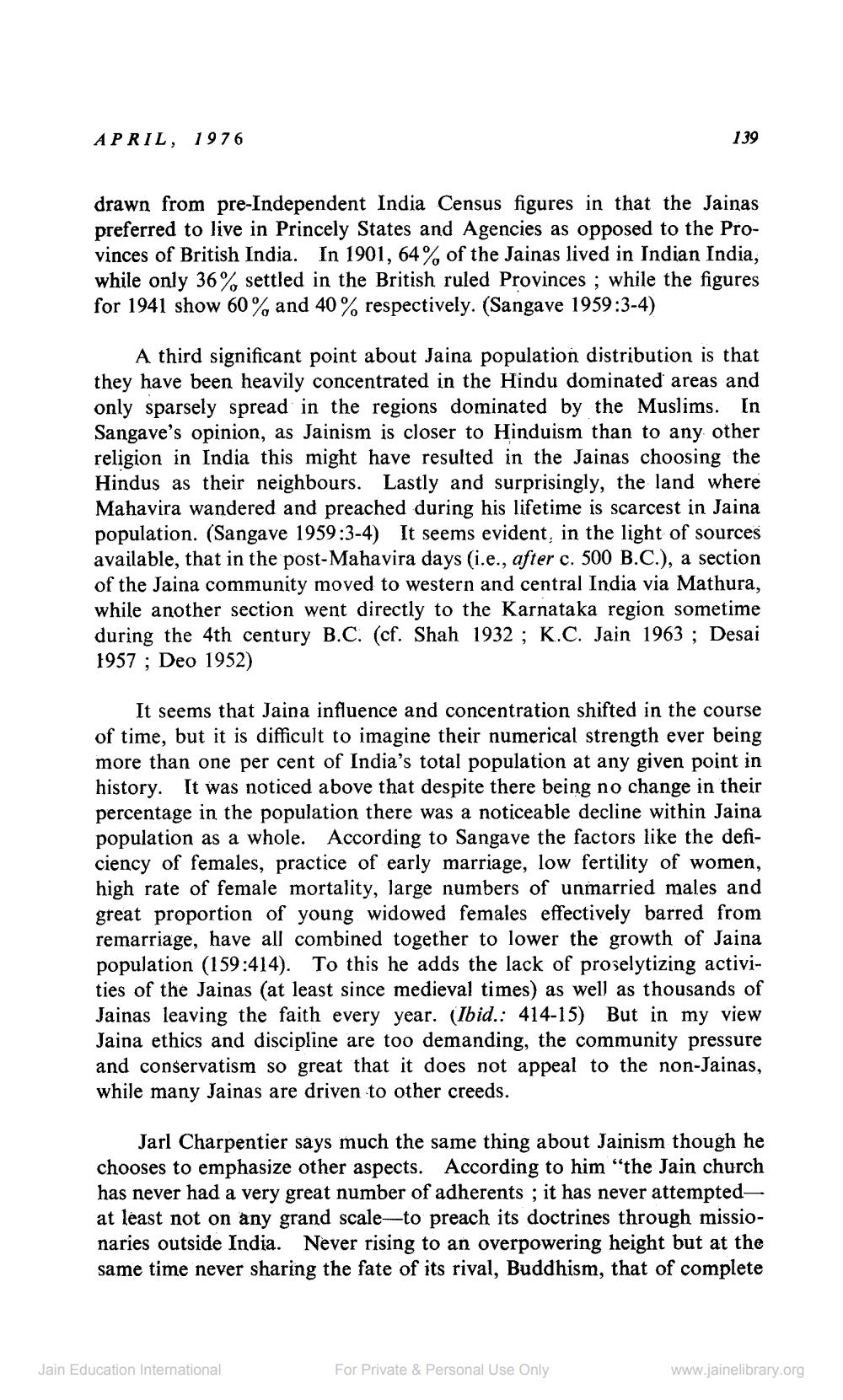Book Title: Jain Journal 1976 04 Author(s): Jain Bhawan Publication Publisher: Jain Bhawan Publication View full book textPage 7
________________ APRIL, 1976 drawn from pre-Independent India Census figures in that the Jainas preferred to live in Princely States and Agencies as opposed to the Provinces of British India. In 1901, 64% of the Jainas lived in Indian India, while only 36% settled in the British ruled Provinces; while the figures for 1941 show 60% and 40% respectively. (Sangave 1959:3-4) 139 A third significant point about Jaina population distribution is that they have been heavily concentrated in the Hindu dominated areas and only sparsely spread in the regions dominated by the Muslims. In Sangave's opinion, as Jainism is closer to Hinduism than to any other religion in India this might have resulted in the Jainas choosing the Hindus as their neighbours. Lastly and surprisingly, the land where Mahavira wandered and preached during his lifetime is scarcest in Jaina population. (Sangave 1959:3-4) It seems evident, in the light of sources available, that in the post-Mahavira days (i.e., after c. 500 B.C.), a section of the Jaina community moved to western and central India via Mathura, while another section went directly to the Karnataka region sometime during the 4th century B.C. (cf. Shah 1932; K.C. Jain 1963; Desai 1957; Deo 1952) It seems that Jaina influence and concentration shifted in the course of time, but it is difficult to imagine their numerical strength ever being more than one per cent of India's total population at any given point in history. It was noticed above that despite there being no change in their percentage in the population there was a noticeable decline within Jaina population as a whole. According to Sangave the factors like the deficiency of females, practice of early marriage, low fertility of women, high rate of female mortality, large numbers of unmarried males and great proportion of young widowed females effectively barred from remarriage, have all combined together to lower the growth of Jaina population (159:414). To this he adds the lack of proselytizing activities of the Jainas (at least since medieval times) as well as thousands of Jainas leaving the faith every year. (Ibid.: 414-15) But in my view Jaina ethics and discipline are too demanding, the community pressure and conservatism so great that it does not appeal to the non-Jainas, while many Jainas are driven to other creeds. Jarl Charpentier says much the same thing about Jainism though he chooses to emphasize other aspects. According to him "the Jain church has never had a very great number of adherents; it has never attempted— at least not on any grand scale-to preach its doctrines through missionaries outside India. Never rising to an overpowering height but at the same time never sharing the fate of its rival, Buddhism, that of complete Jain Education International For Private & Personal Use Only www.jainelibrary.orgPage Navigation
1 ... 5 6 7 8 9 10 11 12 13 14 15 16 17 18 19 20 21 22 23 24 25 26 27 28 29 30 31 32 33 34 35 36 37 38 39 40 41 42 43 44 45 46 47 48 49 50 51 52 53 54 55
